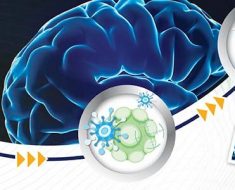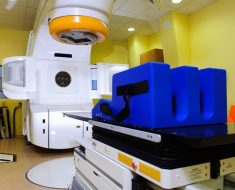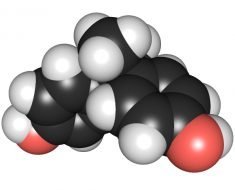Electrical stimulation of the brain and spinal cord may help treat the symptoms of rare movement disorders called neurodegenerative ataxias, according to a study published in the August 22, 2018, online issue of Neurology, the medical journal of the American Academy of Neurology. There are several types of these disorders, which can be hereditary or occur randomly, including spinocerebellar ataxia, multiple system atrophy and Friedreich’s ataxia. Symptoms of ataxias include a lack of coordination that can cause clumsy movements of arms and legs, problems with speech clarity, and sometimes problems with vision, thinking and memory abilities.
The electrical stimulation is called transcranial direct current stimulation (tDCS), a non-invasive therapy that delivers a small electrical current through electrodes placed on the head and along the spine.
“These diseases can be devastating, and no effective treatments are currently available for most of these disorders, so there is great interest in finding new treatments to help reduce symptoms,” said study author Barbara Borroni, MD, of the University of Brescia in Brescia, Italy.
The study involved 20 people with several types of ataxias that affected the cerebellar area of the brain, the part of the brain that helps coordinate movement. They were an average age of 55 and had the disease for an average of 13 years. The participants were divided into two groups. One group received electrical stimulation of the brain and spinal cord five days a week for two weeks while the other group received a sham stimulation where the electrodes were placed on the participant, but the electric current was powered down after five seconds.
The participants were evaluated before the study began and again at two weeks, one month and three months after the treatment on overall tests of ataxia, tests of hand and arm dexterity and how fast they could walk, as well as tests of how their brains were responding to the treatment. Then the participants waited during a three-month “wash-out” period before receiving the opposite treatment and taking the tests again.
When the participants received the stimulation treatment, they improved in every test, while when they received the sham stimulation, they showed no improvement on any test. For example, on the test of how fast participants could walk eight meters (about 26 feet), participants took an average of 9.4 seconds before the study started. One month after receiving the stimulation, they took an average of 7.8 seconds. After the sham stimulation, the participants had no changes in their times to complete the test.
On a test of hand and arm coordination, participants took an average of 53 seconds to place and remove pegs from a peg board before the study started. One month after receiving the stimulation, participants took an average of 47 seconds to complete the test, while after the sham stimulation they had no change in their speed.
Borroni noted that the results lasted for at least three months for participants.
“The people who had milder symptoms of their disease showed the greatest improvement in their test scores, suggesting that this stimulation should be given at an early stage of the disease to be more effective,” Borroni said.
Source: Read Full Article





